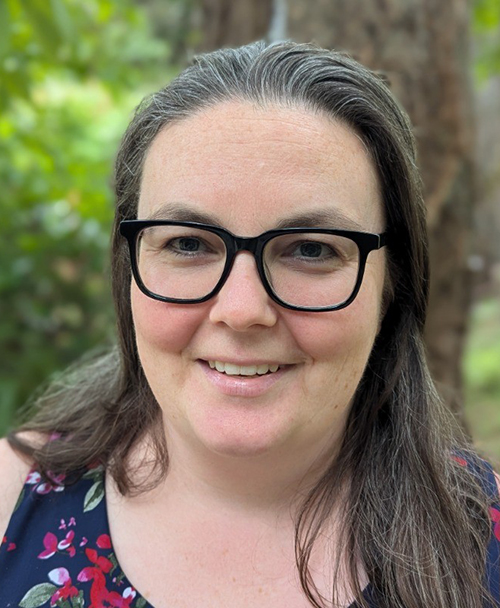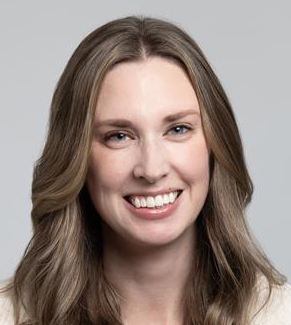
↓ Download a PDF of this issue
Registration for November course now open
By David Wylynko
Registration is now open for the Landform Design Institute’s third in-person landform design course, scheduled for November 24–28, 2025, in Vancouver, British Columbia.
The course will be held at the University Golf Club next to the University of British Columbia and minutes from downtown Vancouver. The five-day course follows on two previous, highly successful in-person courses, which took place in 2019 in at the University of Alberta in Edmonton and in 2022 in Calgary.
Students will learn how to design, build, reclaim, and monitor mining landforms and landscapes that reliably meet post-closure land use goals and design criteria. The course blends expert instruction with real-world case studies and interactive exercises, and is perfect for mine closure professionals, consultants, engineers, and regulators.
Register at https://landformdesign.thinkific.com/courses/landform-design-and-closure-5-day-in-person-course-vancouver-bc-1.
The cost of the course is $1999 for members of the LDI and $2499 for non-members.
The course will be led by LDI Chair, Dr. Gord McKenna, an experienced landform design professional who has delivered dozens of lectures on landform design in Canada and abroad. The course will also include special guest lectures given by other experienced experts.
The course is designed to expand practitioners’ knowledge about landform design. The subjects covered in the course curriculum include: risk-based decision-making; design basis memorandums; regulatory frameworks, the 12 Principles of Landform Design, and adaptive management strategies and programs, among others.
The first four days of lectures will be followed by a group exercise designed to familiarize participants with all the essentials elements of the state of the art in landform design.
Accommodations are available on the university campus and can be booked at https://suitesatubc.com.
David Wylynko is the LDI’s Director of Communications and principal of West Hawk Associates.
Online course live
The Landform Design Institute recently released an online course for practitioners who require guidance on how to develop a design basis memorandum (DBM) for landform design and closure planning. It also provides guidance on governance for the process, including collaboration with Indigenous peoples and local communities.
The course provides direction on assembling a design team comprising specialists who can develop a vision and a master table of goals, objectives, and criteria. The cost is $399 for non-members, with LDI members receiving a 20 percent discount.
Registration for the short is available at landformdesign.com/dbm-course

Supporting Indigenous perspectives and co-reclamation case studies
Indigenous perspectives on landform design are set to acquire a much higher profile thanks to a new LDI initiative led by Board Member Christine Daly and focused on co-reclamation, or the art of recognizing and including Indigenous knowledge and western science in landscape design to improve reclamation practices and policies.
Daly, Associate Director of Sustainability Engagement at the University of Calgary, has gathered together a circle of advisors consisting largely of Indigenous knowledge holders to co-design a project that shares experiences and stories about reclamation of traditional land uses. The advisors held their inaugural meeting in June. Daly recently completed a PhD in environmental design and focused her thesis on co-reclamation.
The project is benefitting from the support of LDI corporate member Integral Ecology Group (IEG), which will help ensure the circle of advisors can meet in person, a critical element of building the trust needed for such a project to succeed. IEG is a Canadian company that provides consulting expertise across a variety of technical disciplines at the interface between humans and their environments, applying innovative solutions and support for effective land-use management, culture and ecosystem assessment, reclamation, end land use and mine closure planning, assessment and management of cumulative effects, and environmental governance.
IEG’s services include Indigenous knowledge and social science research, which includes a specialization in participatory and community engagement-based research approaches, and in the social science methodologies (including qualitative and quantitative research tools) required for the collection and analysis of Indigenous knowledge and community data.
As Daly describes it, the project will ideally expand on the core principles of the United Nations Convention on Biological Diversity, which recognizes that “Indigenous peoples and local communities have managed variability, uncertainty and change through multigenerational histories of interaction with the environment.”
The project is intended to lead to the publication in 2025 of up to five case histories, and in 2026 to the production of a full-length coffee table book describing co-reclamation case histories in Canada and around the world. Companies and other organizations or individuals interested in supporting the project are urged to contact LDI Administrator Jasmine Winter at jasmine@landformdesign.com.
EXPERT TIPS

Best practices to shift your approach to mine closure
As part of its mandate to spread the best ideas on landform design, the LDI invited Kathleen Hanley to share her insights with other members. She distilled them down to four principles. Hanley, MEERL, P.Eng. (BC), takes a multidisciplinary and systems-oriented approach to mining projects. She has more than 15 years of design experience on tailings and water management and mine closure projects throughout the Americas. Now running Hanley Consultants in Courtenay, BC, she has held leadership and management roles that have honed her scope development, project implementation, and communication expertise.
There’s a lot of useful mine closure guidance out there. And it’s remarkably consistent. I’ve pulled out four broad principles that I think are a useful mental framework for approaching mine closure. They are:
1. Plan ahead and then iterate.
Most closure decisions are made before the start of construction. So if there hasn’t been meaningful planning on post-closure land use and socio-economic transitions before then, the operation may have unintentionally limited their options. Things change all the time on a mining project: changes in commodity prices make something economic that previously wasn’t (and vice versa), regulatory changes create and close opportunities, and exploration and new technologies extend mine life. A closure plan, like all other plans, needs to be updated with new information and changing conditions.
2. Take a holistic and integrative approach.
Because no part of a mining operation is untouched by closure, no part of a mining operation should be excused from closure planning. Technical expertise, engagement teams, financial groups, and affected communities can’t work in isolation. They need to understand each other’s constraints and goals, then co-create solutions.
3. Collect good data and keep good records.
A deep understanding of the project’s context (geological, ecological, social, economic, etc.) means that more closure options can be generated. Better designs and plans will be made when they are based on more comprehensive data. Quality records of plans and decisions mean future project participants can understand why decisions were made and more easily revisit options as conditions change.
4. Use metrics other than just net present value to make decisions.
Risk-informed decision-making better captures non-financial risks like health and safety, environmental, and reputational risks. Net present value distorts the true cost of management, monitoring, and water treatment in perpetuity, making these closure outcomes much more attractive than they should be.
Do these resonate with you? What other principles guide your approach to closure?
The guidance documents and industry standards I reviewed in preparing this post include:
- The ICMM Integrated Mine Closure: Good Practice Guide
- The Landform Design Institute’s Position Paper on Landform Design, and its Design Basis Memorandum Guide
- GARD Guide, Chapter 11 Sustainable Mine Closure — I was particularly impressed with the list of macro-scale mine design and planning choices that can be made early on to reduce ARD potential, and reduce water handling effort, both of which can be a significant source of closure liabilities (see section 11.2.1).
- The Mining Association of Canada’s Towards Sustainable Mining Closure Framework
- The Global International Standard on Tailings Management
- The Consolidated Mining Standard Initiative, 2024 Draft Standard for Consultation.
Student award applications open

The LDI will be promoting its new students award on campuses across the country this fa.
Any student attending an accredited post-secondary program related to landform design or one of its disciplines and holding membership in the LDI is eligible for the $500 award.
The requirements are simple: fill out an application and answer the question: “What is your perspective of landform design and how would your membership with LDI contribute to your future professional career development?” The deadline for applications is November 30, 2025. More at landformdesign.com/award
Aileen Cash joins the Board

The LDI Board of Directors has a new member. Aileen Cash is a geological engineer specializing in closure design for tailings and waste rock landforms, including facilitation of multidisciplinary closure teams, design and construction of cover trials, and hydrogeological and geotechnical site-characterization investigations. Her research focuses on the study of historical mine waste rock, including evaluation of unsaturated and geotechnical material properties to assess their effect on hydraulic flow. She is a senior engineer at BGC Engineering and has been involved developing progressive reclamation techniques for mines in Central Canada. She has a bachelor’s degree in geological engineering from the University of Waterloo and a master’s in geoenvironmental engineering from the University of Alberta.
Lecture series reaches milestone
The LDI’s popular virtual Lunch and Learn series for LDI corporate members continued June 9, 2025, featuring a lecture on the reclamation designer of record.
The lecturer, LDI Chair Gord McKenna, explained that the role is patterned after the engineer of record, and is needed to manage costs, risks, and the design and construction effort.
The latest lecture celebrated the third anniversary of the series, with the inaugural session — on safe closure for tailings facilities — being given June 9, 2022.
Since then, Dr. McKenna has lectured on a wide range of topics, including how to make reclamation easier, how to produce a Design Basis Memorandum (DBM), how to choose return period criteria for landform design, and designing for slopes, soft tailings, and plateaus.
Each Lunch and Learn is initially delivered exclusively to corporate members, and video recordings, including question-and-answer sessions, are made publicly available a year and a half later. Find the first six episodes here: landformdesign.com/lunch-and-learn.
© 2025 The Landform Design Institute